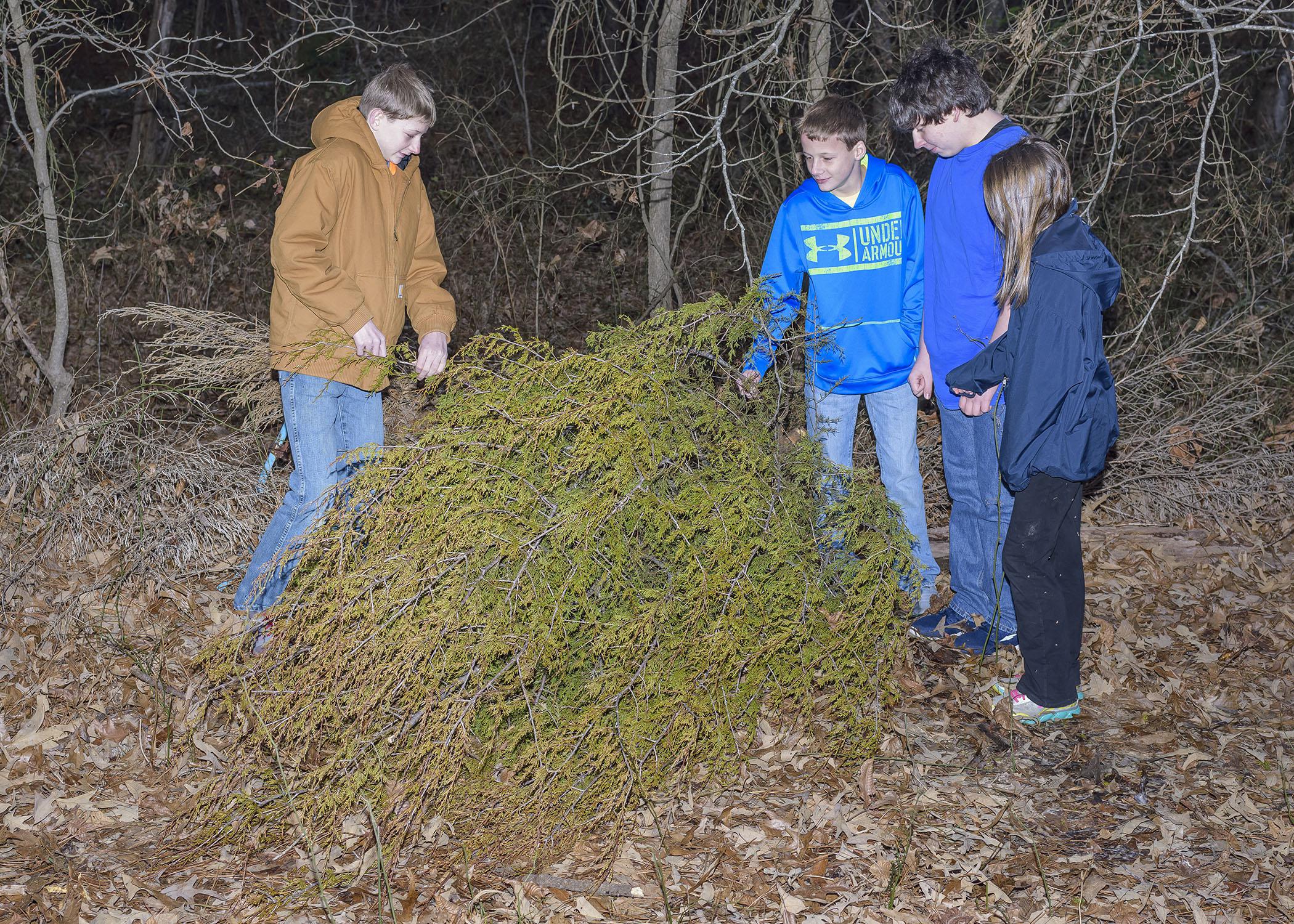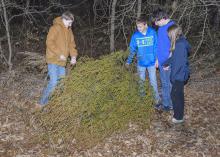Information Possibly Outdated
The information presented on this page was originally released on January 9, 2015. It may not be outdated, but please search our site for more current information. If you plan to quote or reference this information in a publication, please check with the Extension specialist or author before proceeding.
Resolve to recycle your Christmas tree in 2015
MISSISSIPPI STATE -- According to the National Christmas Tree Association, American consumers purchase nearly 30 million real trees annually from one of more than 15,000 Christmas tree farms. Real-tree enthusiasts cite three main reasons for their yearly choice: tradition, fresh pine scent and appearance.
Selecting a real tree is also an environmentally friendly choice. Real Christmas trees are 100 percent biodegradable and can be recycled in a variety of ways.
The National Christmas Tree Association offers these little-known facts about real trees:
• Each acre of Christmas trees grown produces enough daily oxygen for 18 people. In other words, the more than 500,000 acres of trees in production throughout North America benefit 9 million people.
• Real Christmas trees absorb carbon dioxide and other toxic gases while stabilizing the soil, protecting water resources and providing refuge for wildlife.
• For each Christmas tree harvested, 3 seedlings are planted. This amounts to approximately 50 million new trees planted each year.
Following the holiday cheer and clean-up, a real tree is completely recyclable. “Treecycling” is a new term that refers to the many ways that real Christmas trees can be recycled or reused. In 2010, http://www.Earth911.com began a nationwide “Treecycling Directory” to guide users to the nearest tree recycling center.
The U.S. Environmental Protection Agency and the National Christmas Tree Association suggest several other ways to recycle or reuse Christmas trees.
Find a neighborhood tree pick-up program. Check your local newspaper for advertisements from organizations raising money through Christmas tree removal and recycling. Scouting troops, church groups, and schools will come to your house and pick up your tree for a small fee. Be sure to find a group that plans to mulch, chip or recycle the tree in some fashion.
Compost your tree. A Christmas tree can easily be sawed into pieces to fit loosely in your compost bin. Remove the boughs from the tree trunk and chop them as finely as possible for faster composting.
Turn your tree into mulch. If you have access to a tree chipper or if your local landscape company will chip your tree for a reasonable cost, a 6- to 7-foot tree can produce more than a square yard of mulch for your garden.
Provide a refuge for wildlife. Prop your discarded tree in the corner of your yard for the perfect winter bird haven. Proper shelter is one of the top needs for birds and small mammals during cold weather. Hang some light bird feeders or suet blocks on the branches and enjoy the feathered visitors.
Invest in a potted Christmas tree to plant after the holidays. Start a new tradition and ring in the New Year by planting a tree. Mississippi winters are often mild enough that a tree planted in January will survive. Plan ahead by digging a hole in the fall when the ground is softer.
Improve the shoreline of your lake or pond. Trees provide ideal soil erosion barriers to sand and other sediments. Shallow wetlands also provide good cover for aquatic reptiles and amphibians to hide from predators and keep warm.
There are many options for recycling your Christmas tree. Natural resource experts agree that a real tree is more environmentally friendly in both the long and the short term than an artificial tree is.
For more information on Christmas tree recycling, visit http://www.realchristmastrees.org.

Editor’s Note: Extension Outdoors is a column authored by several different experts in the Mississippi State University Extension Service.



